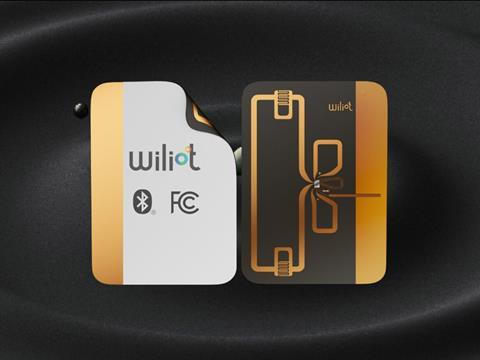
AIPIA member Wiliot, the ambient Internet of Things (IoT) platform provider, has announced a breakthrough with its new ability to sense and analyze humidity levels of individual products, in real-time, throughout the supply chain.
This extends the features of the company’s battery-free, real-time locating visibility platform. The solution is being trialled with food and pharmaceuticals to track conditions that could affect the quality of those products. Early users are expected to be grocers, retailers, and logistics companies to ensure the freshness and sustainability of products. Interested parties can meet the company at the AIPIA World Congress.
By adding humidity sensing to the company’s visibility platform—on top of existing temperature, location, and carbon emissions sensing capabilities—Wiliot has made it possible for companies to better ensure the safety, integrity, freshness, and sustainability of moisture-sensitive products – end-to-end and at an unprecedented scale, it claims.
“This is a game-changing technology achievement for supply chain visibility,” says Wiliot’s VP of data products & algorithms, Thaddeus Segura. “By adding humidity sensing to the Platform, we are transforming the handling of products we all consume and depend on. Now companies can deliver impeccable quality to their customers while promoting sustainability and responsible resource utilization.”
The platform connects the digital and physical worlds through the Wiliot Cloud and Wiliot IoT Pixels, which are low-cost, self-powered, mass-manufactured postage stamp-sized compute devices affixed to products and packaging.
The IoT Pixels continuously and automatically transmit data to the Cloud via standard Bluetooth devices, it says. This greatly reduces the staffing and operational cost of traditional tracking methodologies, while also reducing error rates, waste, mis-shipments, mis-picks, and out-of-stocks, according to the company.
With this latest launch, the company’s engineers have introduced to IoT Pixels a tiny membrane that detects humidity in the air. When an IoT Pixel is exposed to different humidity levels, the information is relayed wirelessly to the Wiliot Cloud. In the cloud, this humidity data is combined with temperature and location data to generate insights and timely alerts for staff that can better optimize supply chain operations.
By using the latest technology to efficiently connect any item to the internet and embedding it with intelligence and awareness, companies can create more efficient, profitable, and sustainable supply chains, it believes.
“Based on this new humidity data, companies can now track, in real-time, the relative impact of environmental conditions on moisture-sensitive products – to improve their freshness, quality, safety, and integrity,” Segura continues. “Food retailers can apply freshness insights to their operations to ensure the freshest, ripest products are sold first, while healthcare companies can monitor the safe handling and storage of medicines and health commodities.”
Products, from produce to pharmaceuticals, have different humidity handling requirements. This lates platform development helps ensure compliance from producer to distributor to retailer to pharmacy, delivering significant benefits for companies and consumers, it says. For example, vaccines, which require precise handling and environmental conditions to deliver their intended health benefits, remain effective.
This article was created in collaboration with AIPIA (the Active and Intelligent Packaging Industry Association). For a full update on active and intelligent packaging, come along to the AIPIA World Congress (co-organized by Packaging Europe) in Amsterdam on 14-15 November. The only smart packaging event covering the entire technology spectrum, the World Congress is a meeting place for the global active and intelligent packaging industry where brand owners, innovators, and other stakeholders can network and see and discuss the latest trends and innovations. Register to attend here.












No comments yet